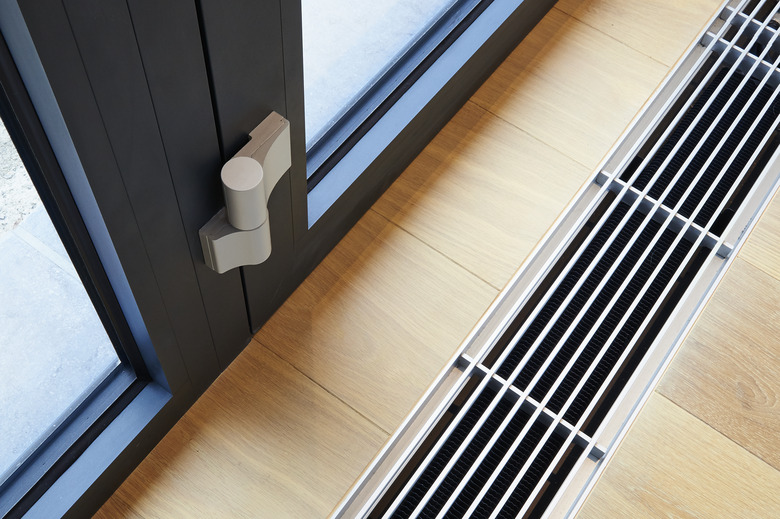How To Calculate The Ventilation Rate For A Confined Space
Ventilation refers to the introduction of clean air into a designated space. The importance of having clean air constantly flowing in an enclosed space increases when there are humans present who are relying upon the cleanliness of that air for life-giving breath. Calculating the ventilation rate will help determine when a confined space is well-ventilated enough to enter.
Step 1
Calculate the volume of the confined space. Multiply the length of the room by its width and height if it is rectangular in shape (having 90 degree corners where all walls touch). In the case of a room not being simply rectangular, section off the space into smaller rectangular spaces mentally. Calculate the volume of these smaller segments, and add the volumes together to find the total room volume.
Step 2
Locate the flow rate of the propulsion device being used to push the air through the space. This is usually a fan or air vent. The flow rate will be given by the manufacturer either on the fan's safety tag attached to the device or in the operating manual of the device.
Step 3
Convert the units of the fan's flow rate to the same unit system as that of the room's volume. For example, if the room's volume was calculated in cubic meters, the fan's flow rate should be in cubic meters per unit time, usually minutes. See "Resources" for a volume unit conversion chart.
Step 4
Divide the volume of the room by the fan's flow rate, using the same unit system. The volume unit will cancel out, leaving only the time unit. The number achieved here is the time it takes for the air in the space to be replaced once using that ventilation system.
Step 5
Divide the number 60 by the time in minutes from Step 4. This is the number of times that the air in the space can be turned over in one hour. Ventilation rate is often expressed as this number, which known as air exchanges per hour (ACH).
Cite This Article
MLA
Richert, Bailey. "How To Calculate The Ventilation Rate For A Confined Space" sciencing.com, https://www.sciencing.com/calculate-ventilation-rate-confined-space-7620790/. 13 March 2018.
APA
Richert, Bailey. (2018, March 13). How To Calculate The Ventilation Rate For A Confined Space. sciencing.com. Retrieved from https://www.sciencing.com/calculate-ventilation-rate-confined-space-7620790/
Chicago
Richert, Bailey. How To Calculate The Ventilation Rate For A Confined Space last modified August 30, 2022. https://www.sciencing.com/calculate-ventilation-rate-confined-space-7620790/
